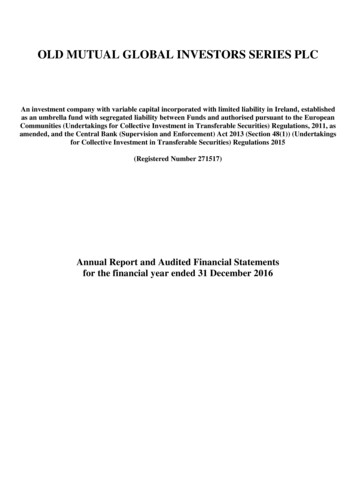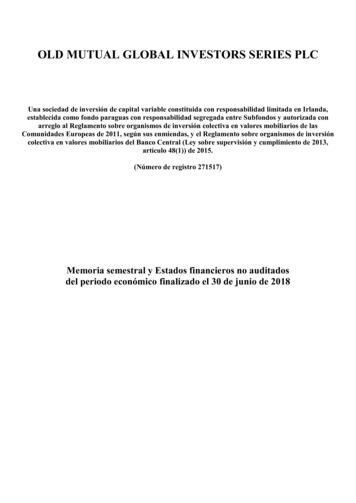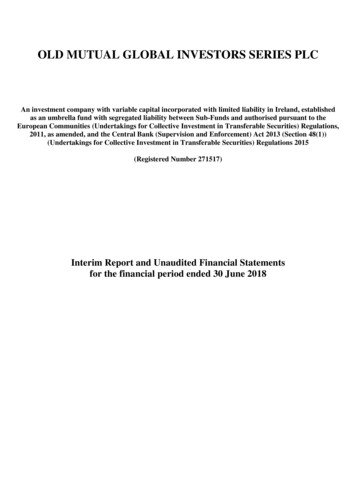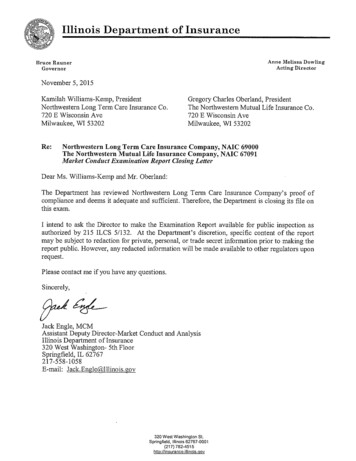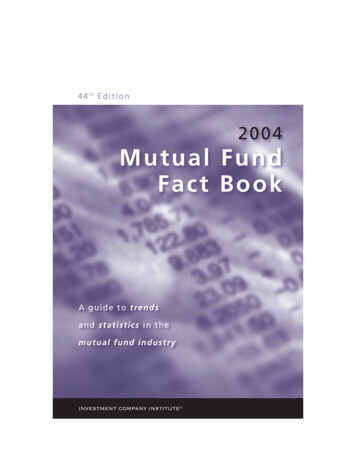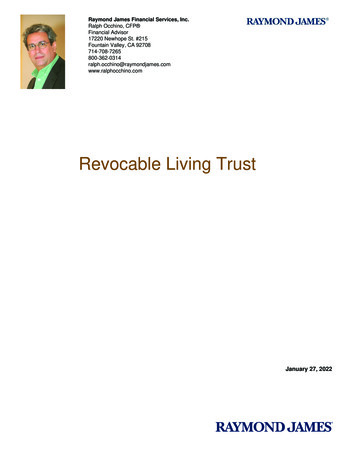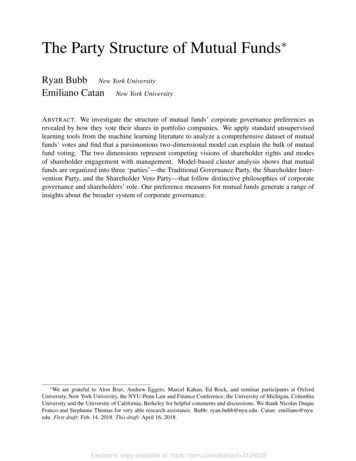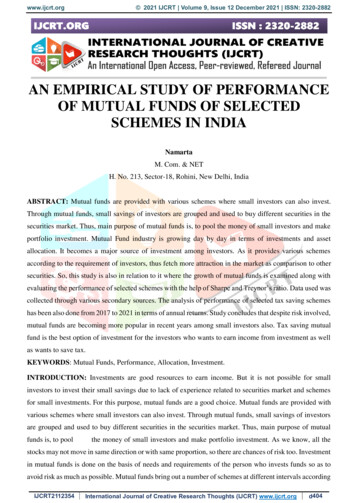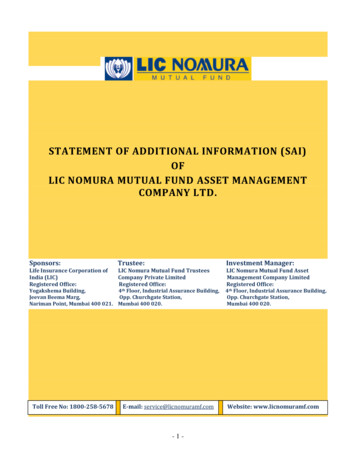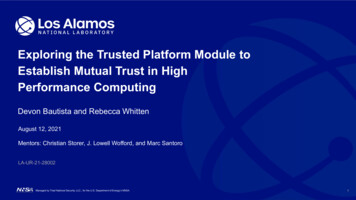
Transcription
Exploring the Trusted Platform Module toEstablish Mutual Trust in HighPerformance ComputingDevon Bautista and Rebecca WhittenAugust 12, 2021Mentors: Christian Storer, J. Lowell Wofford, and Marc SantoroLA-UR-21-28002Managed by Triad National Security, LLC., for the U.S. Department of Energy’s NNSA.1
Bootstrapping of a Typical Stateless ClusterStateless No secondary storage (e.g. hard disk) Parent and nodes power onNodes look for and connect to parentParent configures nodes and provides OS imageNodes boot OS imageWhat’s to stop an adversary from imitating a node? Stealing secrets (e.g. SSH keys)?2
Problem in Stateless BootParentMan in theMiddleChildChildChild3
Problem in Stateless BootParentMan in theMiddleChildChildChild4
The ProblemMutual TrustProve IdentitymTLS**mTLS mutual Transport Layer Security a two-way cryptographic authenticationprotocolStore a keyHow to store these securely?5
What is a TPM? “Trusted Platform Module” A secure and separate cryptoprocessor Defined by TCG Specification*– “Trusted Computing Group” Separate, Non-Volatile RAM Access controls for certain groups/trusted-platform-module/A discrete TPM 2.0 chip manufactured by soft-allow-bypass-windows-11-tpm-20-requirement6
What Can a TPM Do? Securely generate keys and store them––RSA and ECCPrivate key never leaves the TPM Perform cryptographic operations–––Sign/Decrypt by “asking” the TPMGenerate random numbersHashing (e.g. SHA-256) Store secrets–In “NV Indices” Measure system state–via Platform Configuration Registers (PCR)Internal structure of the TPM 2.0.Source: Trusted Computing Group, Trusted Platform Module(TPM) Summary Much more7
Interacting with the TPM Commands defined in specification Byte stream e.g. TPM2 StartupTrusted Software Stack (TSS) TCG-specified APIFeature API (FAPI) used for high-levelcommunication with the TPMSeveral implementations tpm2-tss (C) tpm2-tools (CLI) tpm2-pytss (Python) go-tpm (Go)The Trusted Software Stack, representing layers of TPM interaction withmost abstract at the top to most granular at the bottom.Source: Arthur, Challenger, Goldman. A Practical Guide to TPM 2.08
Interacting with the TPMTPM2 Software Stackgithub.com/tpm2-software Open Source Fully Implements TCG Software Stack Specification tpm2-tss: A C API for interacting with the TPM version 2.0 Provides the Feature API (FAPI), the high-level interface for interacting with theTPMAlso provides the System API (SAPI) and Enhanced SAPI (ESAPI), morelow-level interfaces that provide 1-to-1 mappings of TPM commands specified inthe TPM 2.0 specification tpm2-tools: - Command line utilities for interacting with the TPM CLI wrapper for tpm2-tss, the TPM Trusted Software StackThorough documentation; lots of examples9
Interacting with the TPMTPM2 Software Stack Continued tpm2-tss-engine: An OpenSSL engine for TPM 2.0 Used for doing OpenSSL-related things with the TPME.g. Creating a CSR from a private key stored in the TPM tpm2-pkcs11: A library/specification for creating/manipulating cryptographictokens, such as those that may be stored within a TPM Needed for e.g. using the TPM to store/use SSH keys tpm2-pytss: Python bindings for interacting with the TPM through the ESAPI(with FAPI in progress) Code is heavily transitoryDocumentation currently does not match APIDifficulty setting up in CentOSChose to skip because of the above, possibly unstable (for now) API, andsignificant setup overhead10
Interacting with the TPMGo-TPMgithub.com/google/go-tpm Golang API for the TPM 2.0Does not yet implement entire TCG SpecificationLess thorough documentationRequires Go 1.16Easier installation: go get github.com/google/go-tpm/tpm211
How Does the TPM Address the Problem? Secure Storage: Able to store secrets without need for storage in disk,firmware, etc. Discrete TPMs are tamper-resistantA PKI for node/parent verification, independent of OSIndependent Access Control: Storage/Operation access depends onauthorization independent of the OS Keys aren’t used or transferred unless authorized by the TPMJust because you have root doesn’t mean you can access the TPM12
Our SolutionImplement a mutual authentication protocol using keys/certificates stored in the TPM tobilaterally authenticate compute nodes and their parent(s).0. Parent cert signed by CA key0. Child cert signed by CA keyCertificate Authority4. Child verifies parent certificateChild NodeTPM 2.0Child certificate1. Child attemptsto connect toparent, sends itscertificate3. Parent sendsits certificateChild keypair2. Parent verifies child certificateParent NodeTPM 2.0Parent certificateParent keypair5. Both partiesverified, securecommunicationbegins13
How SSH Works Using a KeypairClientPossessesprivate keyServerIs pubkey authentication available?Possessespublic keyYesSend username, pubkey, et. al signed by private keyVerify that: Verify the signature with theprovided public key Supplied pubkey is in user’sauthorized keysAuthentication successful14
Using the TPM for SSH Authentication1.Set up PKCS#11 key database tpm2 ptool init2.Create a cryptographic token in the PKCS#11 storage tpm2 ptool addtoken --pid 1 --label sshtok \--sopin supervisor pin --userpin user pin 3.Generate key pair associated with the above token tpm2 ptool addkey --algorithm rsa2048 or ecc256 \--label sshtok --key-label key label --userpin key pin 4.Place public component of key into remote host’s authorized keys file ssh-keygen -D /path/to/libtpm2 pkcs11.so ssh host \‘cat /.ssh/authorized keys’5.SSH into the machine using the TPM key ssh -I /path/to/libtpm2 pkcs11.so host 15
Using the TPM for mTLS Generate CA Key Pair and Certificate openssl x509 . Create an authorization policy tpm2 startauthsession . tpm2 policypassword . tpm2 flushcontext . Define an NV Index with authorization policy tpm2 nvdefine -L policy -C o -s 2048 -p samplepassword 1 Write certificate to NV Index tpm2 nvwrite -Q 1 -C o -i client.crt -P samplepassword Lock Index from Further Writes [Optional] tpm2 nvwritelock -C o 116
Future Work Finish mTLS implementation using the TPM PoC for authenticating nodes with certificate Integrate into Kraken/Layercake? More research/testing into NV Index policies NVName policy to prevent attacker deleting and recreating index Using the PCR functionality to verify and attest the entire boot process17
References[1] C. M. Lonvick and T. Ylonen, The Secure Shell (SSH) Authentication Protocol. RFCEditor, 2006. doi: 10.17487/RFC4252.[2] D. Goutte-Gattat, “Using a TPM for SSH authentication,” Incenp.org, 03-Jan-2020.[Online]. Available: ml. [Accessed:22-Jul-2021].[3] Go-TPM (2021) [Source Code] https://github.com/google/go-tpm.[4] Linux TPM2 & TSS2 Software (2021) [Source Code] https://github.com/tpm2-software.[5] Trusted Platform Module Library Specification, Family “2.0”, Level 00, Revision 01.59,Nov. 2019. [Online]. roups/trusted-platform-module/[6] W. Arthur, D. Challenger, and K. Goldman, A Practical Guide to TPM 2.0: Using theTrusted Platform Module in the New Age of Security. Apress Media, 2015.18
BonusThe TPM isverypowerfuland can domany thingsIt has a1000-pagespecificationand 7-layersoftwarestackIt gives youso muchcontrol overpermissionsandalgorithmsIt has a1000-pagespecificationand 7-layersoftwarestack19
Interacting with the TPM tpm2-tss-engine: An OpenSSL engine for TPM 2.0 Used for doing OpenSSL-related things with the TPM E.g. Creating a CSR from a private key stored in the TPM tpm2-pkcs11: A library/specification for creating/manipulating cryptographic tokens, such as those that may be stored within a TPM
